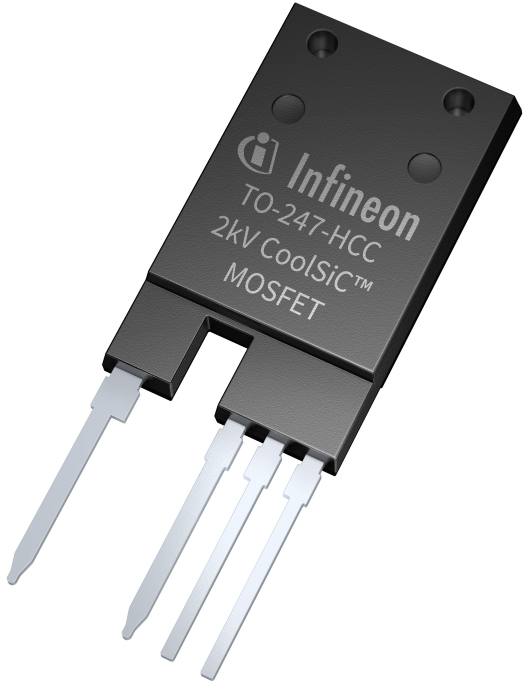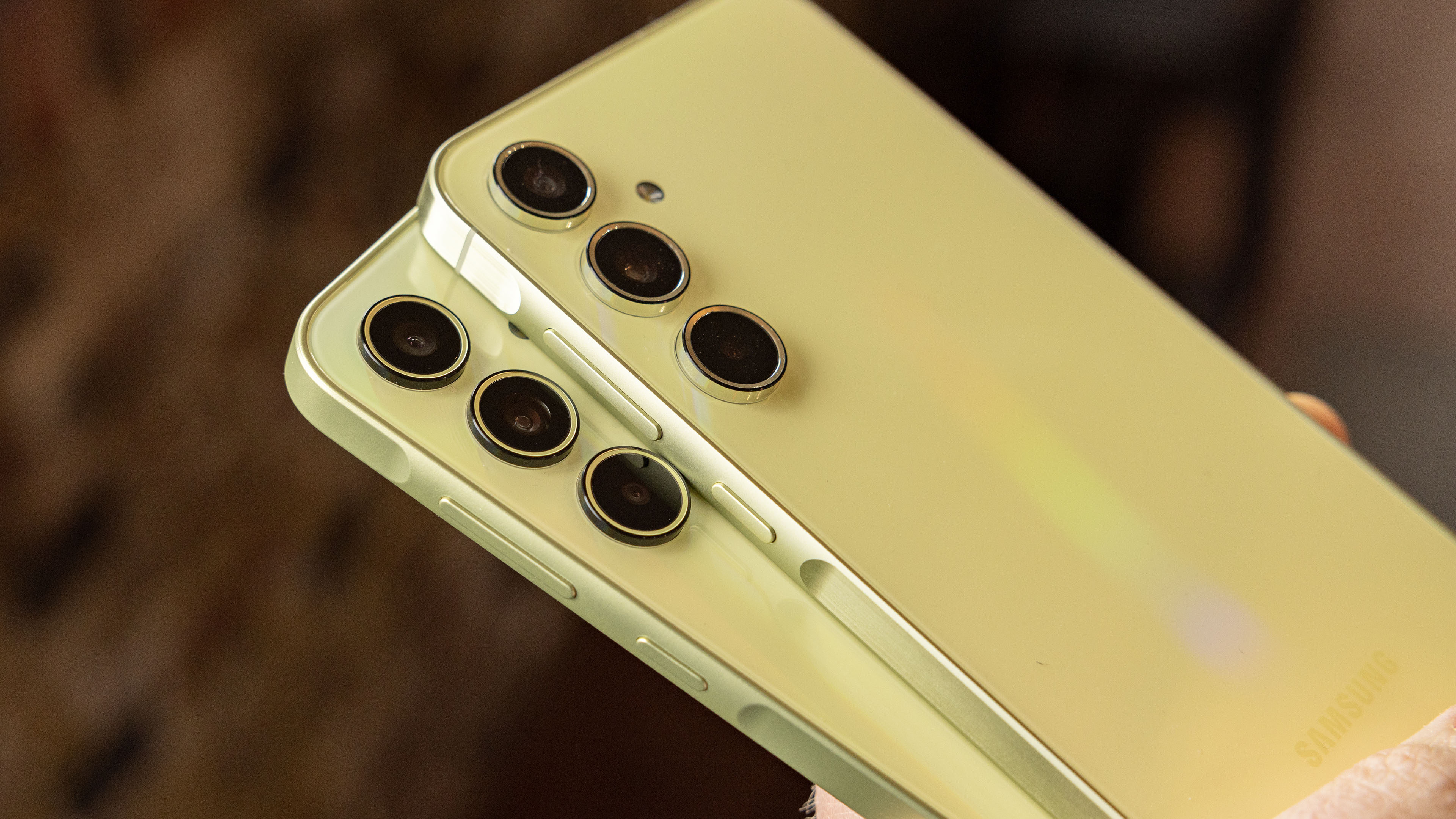
Samsung is updating its mid-range and sending the Samsung Galaxy A54 (review) and the Samsung Galaxy A34 (review) into well-deserved smartphone retirement. We already have a first short review of the Galaxy A55 for you, but in this article, we will be comparing the two new models based on their technical data.
Samsung Galaxy A35 and Samsung Galaxy A55: Technical data in direct comparison
| Samsung’s Galaxy A series 2024 | ||
|---|---|---|
| Model | ||
| Picture |
 |
 |
| Display | 6.6″, AMOLED 2,340 x 1,080 px 120 Hz refresh rate |
|
| SoC | Exynos 1380 | Exynos 1480 |
| RAM | 6 / 8 GB RAM | 8 / 12 GB RAM |
| Storage | 128 / 256 GB | 128 / 256 GB |
| OS | One UI 6.1 based on Android 14 Four OS upgrades Five years of security updates |
|
| Camera | Main: 50 MP, f/1.8, OIS Ultra wide angle: 8 MP, f/2.2 Macro: 5 MP, f/2.4 |
Main: 50 MP, f/1.8, OIS Ultra wide angle: 12 MP, f/2.2 Macro: 5 MP, f/2.4 |
| Selfie camera | 13 MP, f/2.2 | 32 MP, f/2.2 |
| Battery capacity | 5,000 mAh 25 W wired charging |
|
| Connectivity | 5G | Wi-Fi 6 | Bluetooth 5.3 | NFC | 5G | eSIM | Wi-Fi 6 | Bluetooth 5.3 | NFC |
| IP certification | IP67 | |
| Dimensions and weight | 161.7 x 78 x 8.2 mm, 209 g | 161.1 x 77.4 x 8.2 mm, 213 g |
| Offers* | ||
Samsung Galaxy A35 vs. Galaxy A55: display and design

Whew, Samsung—you’re not making it easy for me. Because when I compare the Galaxy A34 and Galaxy A54 with the new models, I can hardly see any visual differences. If I then compare the Galaxy A35 and the Galaxy A55 with each other, I find … hardly any visual differences either.
The Galaxy A35 is barely noticeably longer and wider, but identically thin (8.2 mm) and four grams lighter than the A55. Why is there such a difference in weight between the models, which are both IP67-certified and equipped with a 6.6-inch display?
Presumably, this is due to the frame, as the Galaxy A55 uses a metal frame for the first time, while the A35 sticks to plastic. Both also come with a glass back, although Samsung only mentions Gorilla Glass Victus+ on the A55.
The design language has not changed, so the three floating camera elements arranged one below the other remain. Both devices are also available in four colors—Awesome Iceblue, Navy, Lilac and Lemon—with Lilac and Lemon apparently offering quite interesting color gradients.
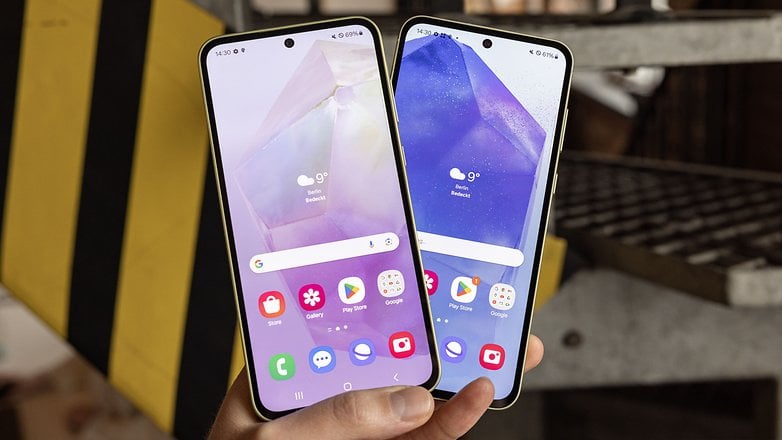
Surprise, surprise—almost everything remains the same on the display. The AMOLED panels have a Full HD+ resolution of 1,080 x 2,340 px, offer a refresh rate of 120 Hz, but are now up to 1,000 nits bright.
Samsung Galaxy A35 vs. Galaxy A55: performance and connectivity
Is Samsung thinking something by not explicitly naming its own Exynos processor for either the A55 or A35? Be that as it may, we find the Exynos 1380 in the Galaxy A35, which still powered the Galaxy A54 last year. The A55, on the other hand, is equipped with the new Exynos 1480, which should significantly boost performance, especially in terms of graphics. According to Geekbench 6, GPU performance actually increases by a whopping 31 percent. Again, please be patient until the final test, which will give us more clarity.
Another look at the hardware reveals the memory options: Both models offer us the choice between 128 and 256 GB of memory expandable via microSD, whereby the small memory variant of the Galaxy A35 is equipped with 6 GB of RAM, while the rest comes with 8 GB of RAM.
Incidentally, Samsung is making very prominent mention of the Knox Vault, which is making its way into the mid-range. Samsung is therefore focusing on security and ensuring that important data such as your PIN is better protected by a secure environment that is separate from the main processor and memory.
We don’t see much spectacular on the connectivity front: both offer Wi-Fi 6, Bluetooth 5.3, and of course NFC.
Samsung Galaxy A35 vs. Galaxy A55: Cameras
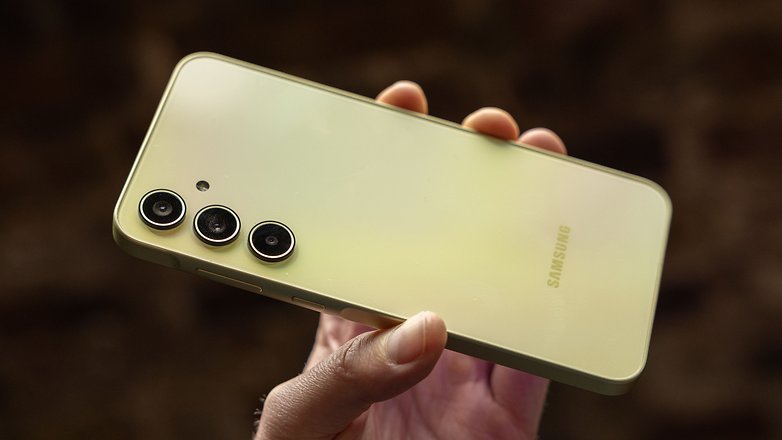
Honestly? My first thought was actually to insert a tumbleweed GIF here instead of text about the cameras of the two models. Because even though I understand and approve of the idea of product care, I would have liked Samsung not to use almost exactly the same cameras as last year.
In sober numbers, this means that the Galaxy A55 has a 50 MP main camera with optical image stabilization and f/1.8 aperture. This is also available in the A35, which increases the number of megapixels in this case from 48 to 50 MP compared to the Galaxy A34.
The rest—12 MP ultra-wide-angle on the A55, 8 MP ultra-wide-angle on the A35, and 5 MP macro on each—greets us with a yawn from the year 2023. Everything also remains the same at the front, which means that we have a 32 MP selfie shooter on the A55 and 12 MP on the Galaxy A35.
For the Galaxy A55, Samsung refers in its press release to the AI-supported image signal processing (ISP) and the improved “Nightography” function to describe the improvement over the previous year. Sounds a bit like there’s not much new to report here, but we’ll need the detailed tests to give us the final answer.
Incidentally, the reference to optical image stabilization in the press release reads as if this is also new—but don’t be fooled, the 2023 models in the Galaxy A class were also capable of this.
Samsung Galaxy A35 vs. Galaxy A55: Software
Both the Galaxy A35 and the Galaxy A55 naturally run One UI 6 (review), which is based on Android 14. Please read the linked test to get a comprehensive impression of Android 14 on the two new mid-range phones. In terms of updates, the mid-range range cannot yet keep up with the seven years of the Galaxy S24 family, but in view of five years of security patches and four years of major Android/One UI updates, we really can’t complain.
Samsung Galaxy A35 vs. Galaxy A55: Battery and fast charging
There is nothing new to report in terms of battery life: Samsung continues to install 5,000 mAh batteries in its mid-range phones and does not include a charger. Charging is done with compatible adapters with up to a modest 25 W.
This quote comes from my esteemed colleague Rubens, who wrote exactly these sentences last year about the A34 and A54. If Samsung is unimaginative, doesn’t work on capacity or charging speed, and continues to not stuff chargers in the box, I don’t see why I should bother with this section anymore.
Samsung Galaxy A35 vs Galaxy A55: Price and availability
So, finally a category that you can start with a real change: Namely, both smartphones have become cheaper, at least in Europe. It’s not a spectacular price reduction, but at least the Galaxy A35 (from 379 euros) and the Galaxy A55 (from 479 euros) are each reasonably cheaper than the 2023 models. Pricing and availability in the US, meanwhile, is still unknown.
Galaxy A models and prices
| Model | Memory | Model Price |
|---|---|---|
| Samsung Galaxy A35 | 128 GB | 379,00 € |
| Samsung Galaxy A35 | 256 GB | 449,00 € |
| Samsung Galaxy A55 | 128 GB | 479,00 € |
| Samsung Galaxy A55 | 256 GB | 529,00 € |
| US pricing and storage options are still unconfirmed | ||
Samsung Galaxy A35 vs. Galaxy A55: First thoughts
A more cynical version of me might have greeted you at the beginning with a sentence like “Welcome to the fireworks of unimaginativeness”. Because there are simply a lot of things that haven’t evolved or haven’t changed significantly, in Samsung’s new mid-range. But this is the mellow and chastened version writing here, and it’s of the opinion that we can’t expect a product to make huge technological leaps every year.
After all, we want to use the devices for longer and become more sustainable—so we can look forward to five years of security updates and four major Android versions—that’s healthier than if we had to be annoyed today that the mid-range models we bought a year ago are now devalued by significantly more powerful phones.
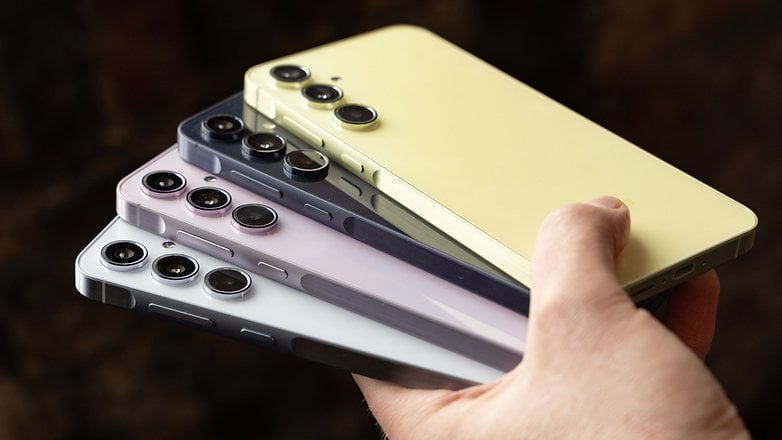
The SoC in the A55 is possibly a reason to reach for the more powerful of the two devices, the remaining differences, including the triple cams, are rather marginal. We have identical displays, identical battery capacities, and identical memory sizes. The look is also identical, although Samsung has at least given the Galaxy A55 a metal frame. We will test both phones in detail and then, of course, we will also look at whether the differences in SoC and camera might justify a hundredfold increase in price. At the moment, I’m almost a little skeptical and I’m curious to hear what you think.
Has Samsung brought an update here that you can be happy with? Or were your expectations perhaps higher beforehand? Please let us know.

